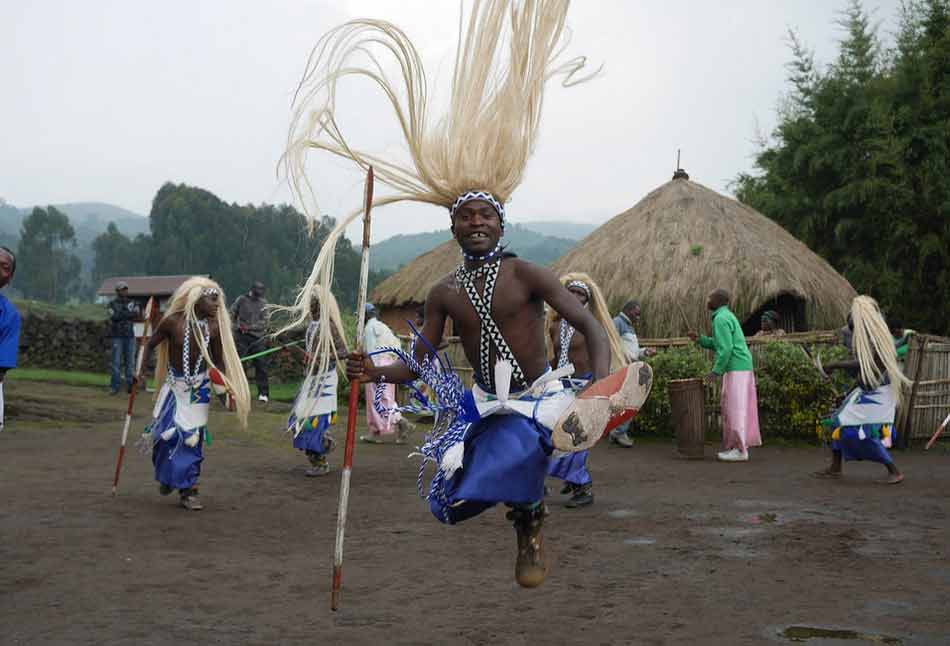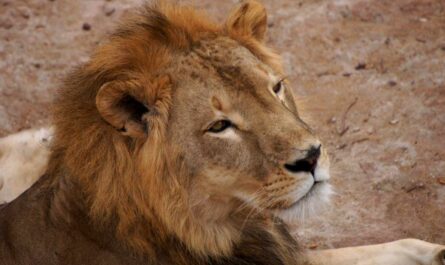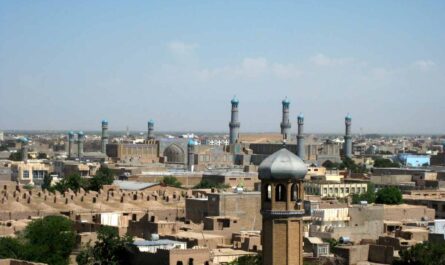What are some of the interesting facts about Comoros which lies in the Indian Ocean, the Comoros archipelago exudes a unique charm, boasting a blend of African, Arab, and French influences. Comprising three major islands – Grande Comore, Mohéli, and Anjouan – along with numerous smaller islets, this picturesque nation offers a tapestry of cultural diversity and natural beauty. With its stunning volcanic landscapes, pristine beaches, and rich marine life, Comoros is a haven for adventurers and nature enthusiasts alike. The capital city, Moroni, pulsates with vibrant markets, historic mosques, and colonial architecture, reflecting the country’s tumultuous past and vibrant present. In this article, I will talk about some interesting facts about Comoros.
Interesting Facts About Comoros: History, Culture, Travel
Despite facing challenges such as political instability and economic disparities, Comoros remains resilient, with its warm-hearted people embodying a spirit of unity and perseverance. As visitors explore its hidden gems and immerse themselves in its enchanting atmosphere, the Comoros Islands unveil a captivating tapestry of traditions, landscapes, and experiences waiting to be discovered. Here are some interesting facts about Comoros:
1. Island Nation
Comoros, officially known as the Union of the Comoros, is a picturesque island nation situated in the Mozambique Channel, nestled off the eastern coast of Africa. This archipelago, renowned for its natural beauty and cultural diversity, comprises a cluster of volcanic islands that form an enchanting paradise in the Indian Ocean. With its turquoise waters, lush vegetation, and pristine beaches, Comoros beckons travelers seeking a tranquil escape from the hustle and bustle of modern life. Each island boasts its unique charms and attractions, from the dramatic landscapes of Grande Comore to the secluded coves of Mohéli, making Comoros a destination ripe for exploration and discovery.
2. Volcanic Origins
The islands of Comoros are characterized by their volcanic origins, a testament to the powerful geological forces that have shaped the region over millions of years. At the heart of Grande Comore, the largest island in the archipelago, looms Mount Karthala, the country’s highest point and one of its most iconic landmarks.
This towering volcano, with its rugged slopes and verdant forests, is not only a breathtaking natural wonder but also an active volcano that periodically rumbles to life, reminding residents and visitors alike of the dynamic forces at play beneath the earth’s surface. Despite the potential risks posed by volcanic activity, Mount Karthala’s majestic presence adds to the allure of Comoros, drawing adventurers and nature enthusiasts from around the world to witness its awe-inspiring beauty firsthand.
3. Traditional Dress
In Comoros, traditional attire reflects the vibrant cultural heritage and influences of the region. Women often don colorful “salwar kameez” outfits, consisting of a long tunic top paired with loose-fitting trousers, adorned with intricate patterns and vibrant colors. These garments not only offer comfort in the tropical climate but also serve as expressions of cultural identity and pride. Men, on the other hand, favor flowing robes, known as “kanduras” or “dishdashas,” which provide both modesty and elegance. Paired with skullcaps or turbans, these traditional garments exude a sense of timeless sophistication and grace, reflecting the rich cultural traditions of the Comorian people.
4. Ecotourism Potential
Comoros boasts untapped potential for sustainable ecotourism development, thanks to its stunning natural beauty and rich cultural heritage. With pristine beaches, lush rainforests, and vibrant coral reefs, the islands offer a diverse range of ecosystems and habitats waiting to be explored. From hiking through verdant forests and snorkeling among colorful marine life to immersing oneself in traditional village life and participating in community-based conservation projects, ecotourism in Comoros holds the promise of meaningful experiences that benefit both visitors and local communities.
By promoting responsible tourism practices, supporting conservation efforts, and engaging with local culture and traditions, ecotourism has the power to preserve Comoros’ natural wonders for future generations while providing sustainable livelihoods for its people.
5. French and Comorian Languages
Comoros is a melting pot of languages, with French serving as the official language for administration and education, reflecting the islands’ colonial history. However, the heartbeat of daily communication pulsates in Comorian, a unique blend of Arabic, Bantu, and Malagasy influences. Comorian, with its rich linguistic tapestry, is widely spoken among the islands’ inhabitants, bridging cultural divides and preserving indigenous traditions. This linguistic diversity is a testament to Comoros’ multicultural heritage, where French and Comorian intertwine to create a vibrant mosaic of communication and expression.
6. Subsistence Agriculture
The backbone of Comoros’ economy is subsistence agriculture, where families cultivate small plots of land to grow crops for their own consumption. Staple foods such as cassava, bananas, yams, and rice form the cornerstone of the Comorian diet, providing sustenance and nourishment to communities across the islands. Agriculture is not just a means of survival but also a way of life, deeply ingrained in the cultural fabric of Comoros. Despite the challenges posed by limited arable land, erratic weather patterns, and environmental degradation, the resilience and resourcefulness of Comorian farmers ensure a steady supply of fresh, locally grown produce to sustain their families and communities.
7. Crater Lake Mystery
Nestled within the rugged terrain of Grande Comore lies Lac Trou du Prophète, a mysterious crater lake that has captivated locals and visitors alike for centuries. What sets this enchanting body of water apart is its peculiar ability to change color, seemingly in harmony with the whims of the weather. On clear, sunny days, the lake shimmers with hues of azure and turquoise, reflecting the brilliant sky above.
Yet, when storm clouds gather on the horizon, its waters transform into deeper shades of indigo and charcoal, mirroring the turbulent skies above. This mystical phenomenon has sparked countless legends and myths among the people of Comoros, who view Lac Trou du Prophète as a sacred symbol of nature’s power and unpredictability. Whether viewed from afar or explored up close, the enigmatic allure of this crater lake continues to beckon adventurers and nature enthusiasts to unravel its secrets and marvel at its ever-changing beauty.
8. Local Handicrafts
Exploring the local markets and artisan workshops of Comoros unveils a treasure trove of handcrafted souvenirs, each a testament to the skill and creativity of the islands’ artisans. From intricately carved wooden sculptures to delicately woven baskets adorned with seashells, these unique creations offer a glimpse into Comoros’ rich cultural heritage and natural beauty. By supporting local artisans and purchasing their handmade goods, travelers not only acquire one-of-a-kind keepsakes but also contribute to the preservation of traditional craftsmanship and sustainable livelihoods. Whether browsing for gifts or mementos, the purchase of local handicrafts becomes a meaningful way to connect with the communities of Comoros and carry a piece of its spirit home with you.
9. Limited Infrastructure
While Comoros enchants with its natural beauty and cultural treasures, travelers need to be mindful of the limitations of the island nation’s infrastructure. Basic amenities such as transportation and healthcare may be limited in some areas, requiring flexibility and patience when navigating the islands. Roads may be rugged and unpaved, making travel between towns and villages challenging, while medical facilities may be scarce or understaffed.
Despite these challenges, the warmth and hospitality of the Comorian people often compensate for any inconveniences, with locals going out of their way to assist visitors in need. By planning ahead and embracing the slower pace of island life, travelers can embark on a journey of discovery that transcends the constraints of infrastructure and immerses them in the authentic charm of Comoros.
10. An Off-the-Beaten-Path Paradise
For intrepid adventurers and seekers of hidden gems, Comoros beckons as an off-the-beaten-path paradise waiting to be explored. Far from the tourist crowds and mainstream destinations, this island nation offers a rare opportunity to experience the unspoiled beauty and cultural richness of an untouched corner of the world. Whether trekking through lush rainforests, snorkeling in pristine coral reefs, or mingling with locals in remote villages, every moment in Comoros is an adventure waiting to unfold. With its rugged landscapes, vibrant traditions, and welcoming communities, Comoros invites travelers to step off the beaten path and into a world of wonder and discovery where the rewards are as boundless as the horizons that stretch before you.
11. Endemic Wildlife
Comoros is a biodiversity hotspot, home to a remarkable array of endemic species found nowhere else on Earth. Among its most iconic inhabitants are the Comoro wart frog and the Van der Decken’s sifaka lemur, two species that have adapted to the islands’ unique ecosystems over millennia.
The Comoro wart frog, with its distinctive markings and melodious call, epitomizes the amphibious charm of Comoros’ rainforests, while the Van der Decken’s sifaka lemur, with its acrobatic leaps and striking black-and-white coat, symbolizes the spirit of exploration and adaptation that defines Comorian wildlife. These and other endemic species serve as living testaments to the islands’ ecological richness and evolutionary heritage, highlighting the importance of conservation efforts to protect their habitats and ensure their survival for generations to come.
12. Music and Dance
Music and dance are integral parts of Comorian culture, providing a vibrant soundtrack to everyday life and special occasions alike. From lively celebrations to solemn rituals, music and dance serve as expressions of joy, sorrow, and everything in between. Two genres that resonate deeply with the people of Comoros are “mutu za,” a rhythmic style of music characterized by its hypnotic drumbeats and soulful melodies, and “ganda,” a lively dance performed in colorful costumes to the accompaniment of traditional instruments like the “gabusi” and “ngoma.”
Whether performed at weddings, festivals, or community gatherings, these musical traditions reflect the cultural diversity and resilience of Comorian society, fostering a sense of unity and belonging among its people. Through music and dance, Comoros celebrates its heritage, honors its ancestors, and embraces the rhythms of life that connect past, present, and future.
13. Mount Ntingui for Adventurers
Mount Ntingui stands as a rugged pinnacle on the island of Mohéli, beckoning adventurers and hikers to conquer its heights and behold the breathtaking vistas that await at the summit. As the highest peak on Mohéli, Mount Ntingui offers a thrilling challenge for outdoor enthusiasts, with its winding trails, rocky slopes, and dense vegetation promising an exhilarating ascent.
From the lush foothills to the windswept ridges, every step brings adventurers closer to the awe-inspiring beauty of Mohéli’s natural landscape. At the summit, panoramic views stretch out in all directions, offering a sense of triumph and awe that only comes from conquering nature’s grandest peaks. For hikers seeking an unforgettable adventure, Mount Ntingui stands ready to test their mettle and reward their efforts with memories that will last a lifetime.
14. Marine Protected Areas
Comoros’ rich marine biodiversity is under threat from overfishing, pollution, and habitat destruction, prompting efforts to establish marine protected areas (MPAs) to safeguard its fragile ecosystems. These MPAs serve as havens for marine life, providing refuge for endangered species, nurturing coral reefs, and supporting sustainable fisheries. By designating specific areas for conservation and sustainable use, Comoros aims to balance the needs of its coastal communities with the imperative to protect its natural heritage for future generations.
Through collaboration between government agencies, local communities, and conservation organizations, these marine protected areas offer hope for the preservation of Comoros’ marine biodiversity and the sustainable management of its coastal resources.
15. Dhow Boat Culture
The iconic silhouette of the dhow boat is a familiar sight on the waters of Comoros, symbolizing the islands’ rich maritime heritage and cultural traditions. These traditional wooden vessels, with their graceful lines and billowing sails, have plied the waters of the Indian Ocean for centuries, serving as essential modes of transportation, fishing vessels, and symbols of Comorian identity.
Today, dhow boats continue to play a vital role in daily life, connecting remote islands, transporting goods and passengers, and supporting the livelihoods of coastal communities. Whether gliding across the turquoise waters of the lagoon or navigating the open sea, the sight of a dhow boat evokes a sense of timelessness and adventure, inviting travelers to experience the maritime legacy of Comoros firsthand.

16. Fragile Economy
Comoros grapples with the harsh realities of poverty, unemployment, and economic instability, making it one of the world’s poorest countries. The economy, heavily reliant on agriculture and fishing, struggles to generate sufficient income to meet the needs of its population. Limited access to education, healthcare, and infrastructure exacerbates the cycle of poverty, further hindering economic development and social progress.
Moreover, Comoros’ fragile economy is vulnerable to external shocks, such as natural disasters, global economic downturns, and fluctuations in commodity prices. As a result, the government relies heavily on foreign aid and assistance to bridge the gap between revenue and expenditure, perpetuating a cycle of dependency and stunting the country’s long-term growth potential. Despite these challenges, the people of Comoros demonstrate resilience, resourcefulness, and a spirit of community solidarity as they strive to overcome adversity and build a brighter future for themselves and future generations.
17. Warm and Humid Climate
Comoros enjoys a tropical climate characterized by hot and humid temperatures year-round, tempered by refreshing sea breezes. The islands experience two distinct seasons: a dry season from June to October and a rainy season from November to May. During the rainy season, lush vegetation flourishes, rivers swell with rainfall, and waterfalls cascade down rugged cliffs, creating a verdant paradise for nature lovers.
Despite the occasional downpours, the rainy season offers unique opportunities to witness the islands’ natural beauty in full bloom, with vibrant flowers blooming and wildlife thriving in the rejuvenated landscape. Visitors should come prepared for warm temperatures and occasional showers, but the rewards of experiencing Comoros’ lush tropical environment firsthand are well worth the occasional inconvenience.
18. Densely Populated
Despite its small size, Comoros is densely populated, with the majority of its inhabitants concentrated on the larger islands of Grande Comore, Anjouan, and Mohéli. This high population density is a reflection of the islands’ limited land area and fertile soils, which support agriculture and settlement. In urban areas like Moroni, the capital city, bustling markets, narrow alleyways, and vibrant street life create a sense of energy and dynamism that contrasts with the islands’ tranquil natural surroundings.
Despite the challenges posed by limited land and resources, the people of Comoros have cultivated a strong sense of community and resilience, fostering close-knit ties and cultural traditions that endure to this day. As Comoros seeks to balance economic development with environmental conservation, the challenge lies in finding sustainable solutions that preserve the islands’ natural resources while improving the quality of life for its residents.
19. Friendly and Welcoming People
Hospitality is a cornerstone of Comorian culture, and visitors to the islands are greeted with genuine warmth and hospitality. The Comorian people are renowned for their friendly smiles and generous spirits, making visitors feel like cherished guests from the moment they arrive. Whether sharing a meal with locals, exploring a village market, or simply chatting with passersby, travelers are sure to encounter warm welcomes and heartfelt gestures of hospitality wherever they go. This spirit of openness and kindness creates a sense of connection and camaraderie, fostering meaningful exchanges and lasting friendships that endure long after the journey has ended.
20. French Colonial Architecture
The legacy of French colonialism is palpable in Comoros’ architectural landscape, particularly in towns like Moroni, the capital city. French colonial architecture, characterized by its elegant facades, wrought-iron balconies, and tiled roofs, adds a touch of old-world charm and sophistication to the urban fabric. Strolling through the streets of Moroni, visitors encounter colonial-era buildings that serve as tangible reminders of the island nation’s complex history and cultural heritage.
From government buildings and churches to private residences and public squares, French architectural influences are evident in the architectural details and design elements that grace the cityscape. While Comoros has embraced its independence and forged its own path forward, the legacy of French colonial architecture endures as a testament to the enduring bonds between past and present.
21. Three Main Islands
The Union of the Comoros is comprised of three main islands: Grande Comore (Ngazidja), Anjouan, and Mohéli, each with its own distinct character and cultural heritage. Grande Comore, the largest and most populous island, serves as the economic and political hub of the nation, boasting bustling markets, historic landmarks, and vibrant communities.
Anjouan, known for its lush vegetation and fertile valleys, is celebrated for its natural beauty and agricultural bounty, while Mohéli, the smallest of the three islands, offers a tranquil retreat for those seeking peace and solitude amid pristine landscapes and turquoise seas. Together, these three main islands form the backbone of Comoros, providing a rich tapestry of experiences and adventures for travelers eager to explore this enchanting corner of the world.
22. Sun-Kissed Beaches
The pristine beaches of Comoros, with their powdery white sand and crystal-clear turquoise waters, offer a tranquil escape to paradise. Whether lounging in the sun, snorkeling in vibrant coral reefs, or strolling along the water’s edge, visitors to Comoros’ sun-kissed beaches are treated to breathtaking views and a sense of serenity that soothes the soul. From the secluded coves of Mohéli to the bustling shores of Grande Comore, each beach offers its unique charm and opportunities for relaxation and rejuvenation. Whether seeking solitude or adventure, the sun-kissed beaches of Comoros beckon travelers to unwind, recharge, and bask in the natural beauty of this idyllic island nation.
23. Endangered Marine Life
The surrounding waters of Comoros teem with an abundance of marine life, from colorful coral reefs to majestic marine mammals. Dolphins frolic in the waves, while whales migrate through the deep blue waters, and sea turtles glide gracefully along the ocean floor. Despite the richness of its marine biodiversity, Comoros faces threats from overfishing, habitat destruction, and climate change, putting many species at risk of extinction.
Conservation efforts are underway to protect and preserve Comoros’ marine ecosystems, including the establishment of marine protected areas and sustainable fishing practices. By raising awareness and supporting conservation initiatives, visitors can help ensure the long-term survival of Comoros’ endangered marine life, ensuring that future generations can continue to marvel at the wonders of its underwater world.
24. Mount Karthala’s Majesty
Rising majestically from the heart of Grande Comore, Mount Karthala commands attention with its towering presence and rugged beauty. As one of the world’s most active volcanoes, Mount Karthala is a geological marvel, shrouded in myth and mystery. Its rugged slopes are cloaked in lush vegetation, harboring a diverse array of flora and fauna found nowhere else on Earth. From the mist-shrouded summit to the fertile foothills below, Mount Karthala’s landscape is a testament to the power and beauty of nature.
Adventurous travelers can embark on challenging hikes to the volcano’s crater, where they are rewarded with panoramic views of the surrounding landscape and a sense of awe at the raw power of the earth. Whether exploring its slopes, studying its geological wonders, or simply admiring its majesty from afar, Mount Karthala offers a glimpse into the dynamic forces that shape our planet and a sense of reverence for the natural world.
25. French Colonial Past
Comoros’ history bears the indelible marks of its colonial past, having gained independence from France in 1975 after decades of colonial rule. Despite achieving sovereignty, French influences continue to permeate Comorian society, shaping its language, culture, and institutions.
The legacy of French colonialism is evident in the Creole language spoken by many Comorians, as well as in the country’s legal and educational systems, which retain elements of the French civil code and curriculum. Moreover, French cuisine, fashion, and architecture are visible reminders of the enduring impact of French culture on the islands. While Comoros has embraced its independence and forged its path forward, the echoes of its colonial past serve as a poignant reminder of the complex and intertwined histories that shape its identity.
26. Arabic Influence
Islam holds a central place in Comorian society, reflecting the enduring influence of Arab traders and scholars who brought the religion to the islands centuries ago. Today, Islam is the dominant religion in Comoros, with the majority of the population adhering to Sunni Islam and observing its rituals and traditions. The influence of Islam is evident in all aspects of Comorian life, from daily prayers and religious festivals to social customs and cultural practices. Motivation – Mind – Success – Thinking – Productivity – Happiness
Mosques dot the landscape, their minarets towering over towns and villages, while the call to prayer echoes through the streets, signaling the faithful to gather in worship. The teachings of Islam shape the moral and ethical framework of Comorian society, fostering a sense of community, compassion, and devotion among its adherents. As a result, Islam plays a vital role in preserving Comoros’ cultural heritage and identity, connecting the islands to the broader Muslim world, and providing a source of spiritual guidance and inspiration for its people.
27. Mayotte Dispute
The island of Mayotte, located in the Comoros archipelago, remains a point of contention between Comoros and France, serving as a source of ongoing political tension and diplomatic strife. While Comoros gained independence from France in 1975, Mayotte chose to remain a French overseas department following a controversial referendum. This decision has fueled resentment and disputes between the two nations, with Comoros claiming sovereignty over Mayotte and seeking its return to the Comorian fold. However, France maintains control over Mayotte, citing the wishes of its inhabitants and the island’s strategic importance in the region.
The Mayotte dispute continues to strain relations between Comoros and France, posing challenges to regional stability and hindering efforts at reconciliation and cooperation. Despite efforts to resolve the issue through diplomatic means, the status of Mayotte remains a contentious issue that underscores the complexities of post-colonial relations and the enduring legacy of colonialism in the region.



